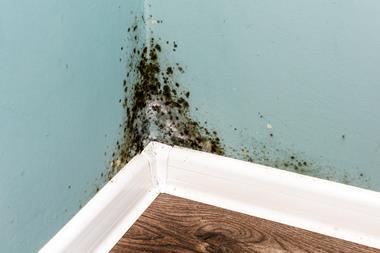Claims management companies are increasingly targeting this part of the market due to claim causation grey areas
Property disrepair claims could become the ”new PPI” after market participants reported a proliferation of claims activity in this line of business, with Carpenters Group director Donna Scully branding it a “growing market”.
A discussion of the potential concerns around this phenomenon arose at the latest Fraud Charter roundtable event, hosted by Insurance Times and sponsored by Carpenters Group, on 8 March 2022.
At the event, it was noted that the rise in this type of claim was potentially the result of several intersecting issues.
Laura Horrocks, head of fraud technology and intelligence for Sedgwick’s UK-based investigation services division, explained: “There’s been more in the media about some cases of tenants in really squalid conditions and it ties in so neatly to this kind of exposure.
“Those were the tenants and claimants that legislation was designed to protect, but everyone’s jumping in off the back of it because it is outside the [Official Injury Claim] portal. It’s more profitable and it’s difficult to challenge - in the same way that whiplash was always difficult to challenge.”
Scully added that the insurance industry was seeing certain actors pulling away from road traffic accident-related whiplash claims following the introduction of the Official Injury Claim (OIC) portal.
“They will be looking for something else”, she said. “I think this is escalating - there’s more meat on the bones, so that’s something we need to continue to look at.”
General economic conditions, such as the rise in fuel and electricity prices, were also noted by Fraud Charter attendees as a contributing factor for claimants seeking to explore potentially fraudulent claims.
BLM director of intelligence Ben FitzHugh said: “In the new world, what we’re seeing is that a lot of claims management companies (CMCs) from the old world are active in the housing disrepair arena.

“We’re certainly aware of lots of online marketing in relation to acquiring, selling and purchasing leads.”
Ruth Needham, partner at Keoghs, agreed: “There’s people saying it’s going to be the new payment protection insurance (PPI), which is worrying.”
Spurious claims?
While the Fraud Charter delegates were careful to note the legitimacy and utility of property disrepair claims for many claimants, evidence was presented that suggested CMCs were targeting this area because it was exploitable.
Needham explained: “Lambeth Council in London, one of the biggest councils in the country, has seen a 600% rise in housing disrepair claims in the past 12 months.
“[It] talked about estates being targeted, with individuals going round and putting fliers through every single letterbox in an estate to explain how [residents] could claim and what it involves.”
Needham also reported that she had heard of a CMC based in Liverpool that had attracted investment by pitching the profitability potential of the property disrepair market. This one organisation has reportedly set a goal of handling 400,000 claims per year, she said.
Compounding difficulties
The trend of CMCs targeting the property disrepair market has also been influenced by potential grey areas in determining genuine claims.
For example, Horrocks said: “Some of the injuries we’re seeing are things like asthma. You’ve got so many other environmental factors there – other pollutants in the area, the impact these have on a person’s health and condition – that it’s almost impossible to say whether that damp area [in the property] has actually contributed to [a resident’s] condition.”
Needham added that there were also reports of “people claiming who hadn’t even lived in the estate – that had moved out or lived there a long time ago”.
This situation is similar to travel claims, noted Scully, where a niche that allowed claimants to recover costs was exploited by certain lawyers and CMCs.
FitzHugh, meanwhile, said that part of the problem with these types of claims is that affected organisations “don’t sit within the wider insurance market, so they won’t benefit naturally from central databases and the Insurance Fraud Bureau”.
He suggested, by way of solution, that it would be important to “[draw] together the organisations that are affected and [make] sure they do have the insight we’ve developed, as an industry, for the property insurance area”.
Hosted by comedian and actor Tom Allen, 34 Gold, 23 Silver and 22 Bronze awards were handed out across an amazing 34 categories recognising brilliance and innovation right across the breadth of UK general insurance.





















































No comments yet